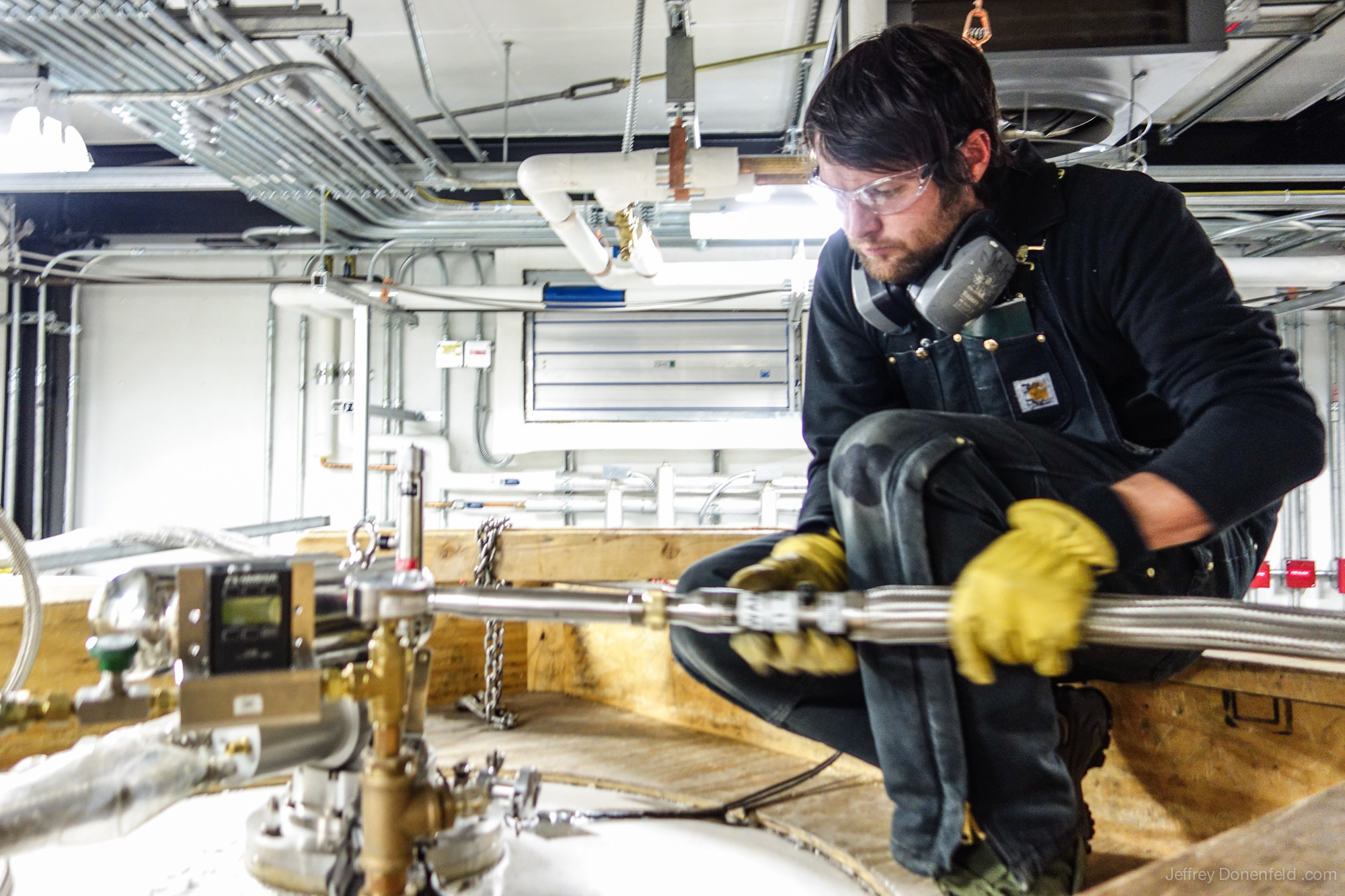The South Pole Cryogenics Laboratory, usually known as Cryo Barn, was originally established to service various telescopes and science experiments with cryogenic cooling liquids such as Liquid Helium and Liquid Nitrogen. However, in recent years, most new experiments which operate at cold temperatures have been of the “closed loop” variety – that is, they don’t vent or leak any of their coolant. Therefore, most of the new experiments don’t need the regular coolant refils that Cryo Barn was built to provide. Last week, I got to watch as the last Liquid Helium dewar was filled from the main tank, and then shipped off to the Bicep2 CMB Telescope.





Liquid helium plays a crucial role in the operation and effectiveness of microwave telescopes. Here are five key points about its use:1
- Cooling of Instruments: Liquid helium is used to cool the sensitive instruments and detectors of microwave telescopes to extremely low temperatures, often close to absolute zero (approximately -273.15°C or -459.67°F). This is essential because it significantly reduces thermal noise, which can obscure the weak microwave signals from space that the telescopes are trying to detect.
- Increased Sensitivity: By reducing thermal noise through cooling, liquid helium enhances the sensitivity of microwave telescopes. This increased sensitivity allows astronomers to detect faint microwave emissions and cosmic microwave background radiation with greater clarity, leading to more accurate measurements and observations.
- Maintenance of Superconducting States: Certain components within microwave telescopes, such as superconducting magnets and quantum sensors, require a superconducting state to function optimally. Liquid helium is used to maintain the temperature conditions necessary for these components to achieve and sustain superconductivity, thereby ensuring the high performance of the telescope’s systems.
- Long-duration Observations: The use of liquid helium enables microwave telescopes to conduct extended observations without the need for frequent recalibrations due to thermal fluctuations. This stability is crucial for long-term studies of the universe, such as monitoring the cosmic microwave background over time to understand the evolution of the universe.
- Enabling Ground-based and Space-based Observations: While liquid helium is a critical resource for ground-based microwave telescopes, it is also vital for space-based telescopes. In the vacuum of space, where radiative cooling is limited, liquid helium is used to cool instruments to the necessary temperatures for observing the universe in microwave frequencies without the interference from Earth’s atmosphere.
In summary, liquid helium is indispensable for the operation of microwave telescopes, enhancing their performance by cooling sensitive components, reducing noise, maintaining superconductivity, allowing for prolonged observations, and enabling both ground-based and space-based astronomy.
- Generated by ChatGPT-4, 2024-03 ↩︎

Comments
One response to “Cryo Barn’s Last Liquid Helium Transfer”
[…] Liquid Helium Cryogenics Laboratory